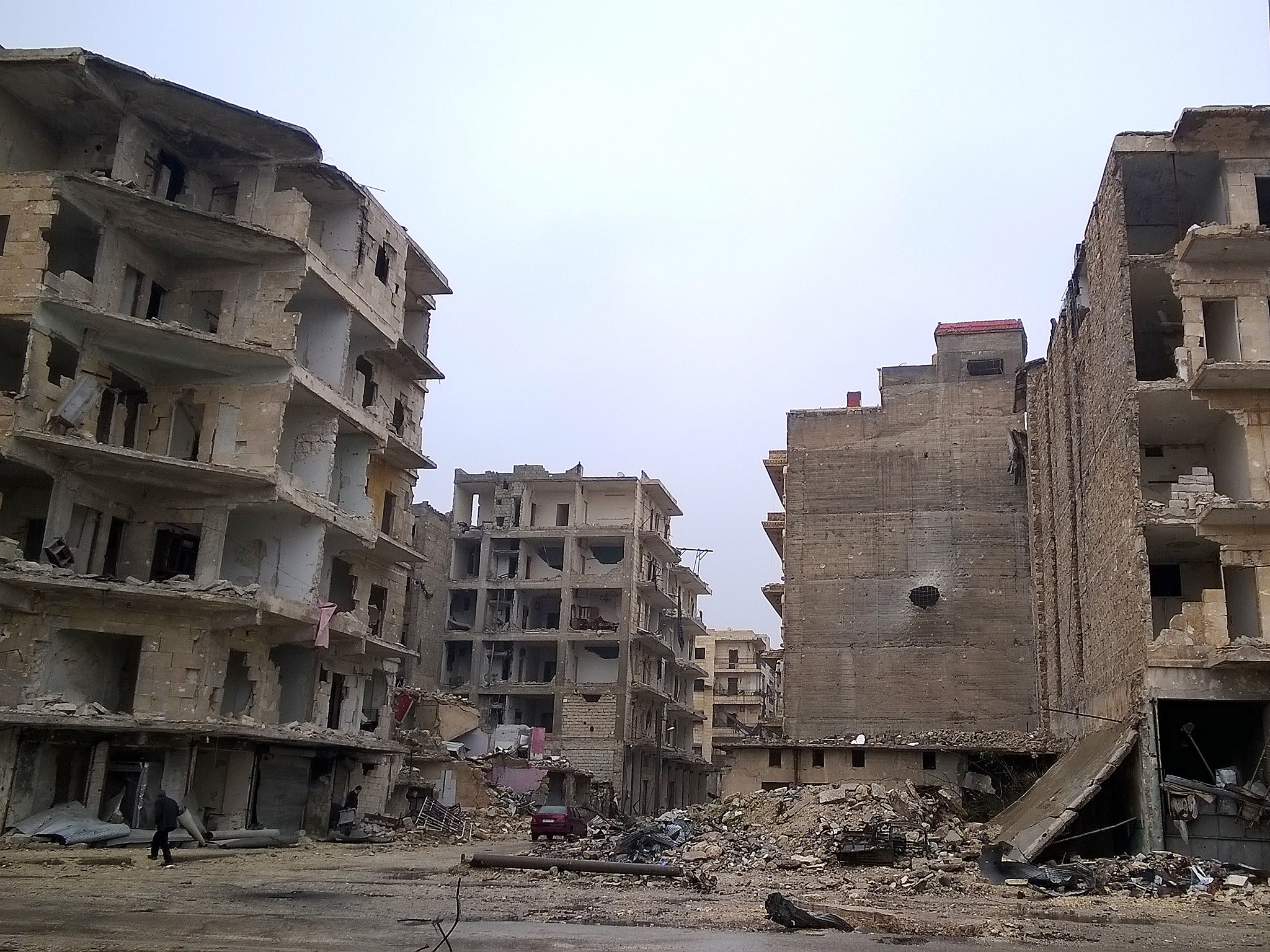An evacuation in eastern Aleppo is in the interests of all sides
If there is a massacre of opposition forces in the city then other rebel strongholds will never surrender


Ceasefires in Syria are difficult to arrange and particularly likely to collapse because their successful implementation involves so many parties inside and outside the country who hate and would like to kill each other. All of these powers have their own agendas that may have little to do with the wellbeing of those who want to leave a besieged enclave in safety.
The planned evacuation of fighters and civilians in Aleppo arranged between Turkey and Russia and due to take place on Wednesday morning predictably failed to occur. Street fighting resumed and it will be difficult for either side to exercise the degree of operational control necessary to get this to stop.
Furthermore, the Syrian government wants as part of an agreement the full or partial evacuation of two pro-government Shia towns, Fua and Kefraya, west of Aleppo that have a population of 20,000 and have been long besieged by the armed opposition. There is also disagreements about the exact numbers to be brought to safety in buses to the rebel-held province of Idlib. By Wednesday night, opposition groups spoke of another agreement being reached, but there was scepticism from some allies of Damascus, such as Hezbollah.
The situation is dangerous for everybody inside the much reduced rebel enclave in Aleppo and the UN says that it has evidence that 82 civilians have been summarily executed by pro-government forces. It believes that many more are dead. But comparisons by the US ambassador to the UN, Samantha Power, with the Rwanda genocide of 1994 and the Srebrenica massacre in 1995 are wholly out of proportion. The most likely outcome is an evacuation of fighters and their families along with thousands of others who, for very good reasons, believe they are in danger from the Syrian security services.
The reason for believing that a ceasefire could hold if implemented and an evacuation are possible is that they have happened before and are in the interests of both the trapped rebel leadership inside east Aleppo and the government. The rebels’ military position has collapsed and they do not look as if they are able to stage a last stand. They may as well save their remaining fighters, families and supporters while they still can. At the same time, Jabhat al-Nusra, which has declared it is no longer an al-Qaeda affiliate, said to make up about 30 per cent of 1,500 fighters to be evacuated – according to the UN – and to be in operational command in east Aleppo, has usually been the last of the armed opposition groups to agree to ceasefires that are close to surrenders.
The Syrian government has an interest in a ceasefire and an evacuation – as has happened previously in and around Damascus – because a massacre would mean that other besieged rebel areas would have no alternative but to fight to the end. There are probably about thirty such enclaves left. The most important of these is eastern Ghouta, a large urban and agricultural area east of Damascus, where over 250,000 people have been blockaded for four years.
The severity of the sieges varies greatly with shortages but no starvation in eastern Ghouta in contrast to Madaya, a town west of Damascus where 43,000 people have been starving and even those with money can find no food to buy. In Deir Ezzor in eastern Syria some 110,000 people are besieged by Isis in a Syrian government-held enclave, but are receiving supplies dropped from Russian aircraft.
The figures for those besieged in Syria – excluding east Aleppo – was 590,000 in September according to the UN. The numbers are only roughly accurate because those inside an enclave have an interest in inflating them in order to get the maximum amount of aid. The UN has previously then made its own estimates of the real numbers and tried to persuade the Syrian government to allow in aid convoys with sufficient food to feed them.
The figures for fighters and civilians in east Aleppo differ widely and this may be one reason for the delayed evacuation. The UN used to estimate 250,000 to 275,000 people lived in east Aleppo and 1.5 million in government held West Aleppo (where many also receive aid) but now appears to have reduced this to 140,000 in the east. The number of fighters had originally been estimated at between 8,000 and 10,000, which may have been too high, but many may have been killed or have already surrendered.
A final reason for the government to want to bring the battle for Aleppo to a close as quickly as possible is that Isis has recaptured Palmyra and is threatening an important Syrian air base in the region. The government will want to transfer its best combat troops south to the Palmyra front as will their Russian allies, who highlighted their role in the recapture of the ancient city last March and are humiliated by its loss.
Of course, the fact that a ceasefire and an evacuation of east Aleppo is in the interests of government and armed opposition does not mean it is going to happen.
Join our commenting forum
Join thought-provoking conversations, follow other Independent readers and see their replies
Comments